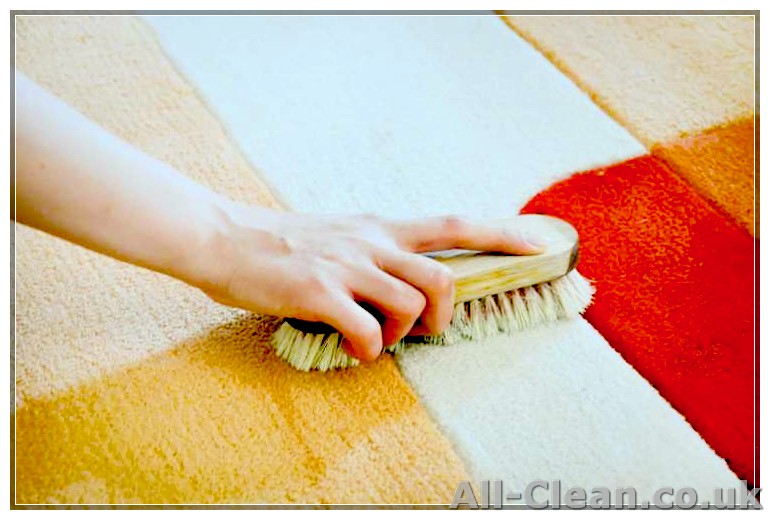
Spilling milk on your carpet can be a real headache. The liquid is absorbed quickly by the fibers, leaving behind a stubborn stain and an unpleasant smell. But fear not! There are tried-and-tested methods that can almost magically remove these pesky stains, leaving your carpet clean and fresh once again.
Before you begin the cleaning process, it’s important to act fast. The longer the milk sits on your carpet, the harder it will be to remove. First, blot up as much of the spilt milk as possible using a clean white cloth or paper towel. Be gentle and avoid rubbing, as this could push the milk deeper into the carpet fibers.
Once you have removed as much milk as you can, it’s time to tackle the stained area. Start by diluting a small amount of mild liquid soap in lukewarm water. Mix well until you have a soapy solution. Then, dip a clean cloth or sponge into the soapy water and gently blot the stained area, working from the outside in. Avoid scrubbing, as this can cause the stain to spread or damage the carpet fibers.
After you have blotted the stain, rinse the area with clean water to remove any soap residue. Blot again to remove excess moisture. Another tip is to use a flexisheet or cloth soaked in lukewarm water to gently rub the stained area. This can help to lift any remaining milk and leave your carpet looking as good as new.
If the smell of spoiled milk lingers even after cleaning, there’s a simple solution. Sprinkle some baking soda on the affected area and let it sit for a few hours or overnight. Baking soda is known for its ability to absorb odors. Once the baking soda has had time to work its magic, vacuum it up and enjoy the fresh scent.
When it comes to removing dried milk stains, the process is a little different. First, scrape off any solids with a spoon or dull knife. Then, mix a solution of one part ammonia and one part lukewarm water. Take a clean cloth or sponge and gently blot the stain, working from the outside in. Be careful not to saturate the carpet, as excessive moisture can cause damage. After blotting, rinse the area with clean water and blot again to remove excess moisture.
In some cases, a milk spill can cause the carpet fibers to become discolored. If this happens, don’t worry. You can easily restore the color by mixing a few drops of white vinegar with lukewarm water. Gently blot the discolored area with the vinegar solution and rinse with clean water. Blot again to remove excess moisture and allow the carpet to air dry.
So there you have it – quick and easy ways to remove milk stains from your carpet. By following these simple steps and using affordable household items, you can keep your carpets looking clean and fresh, no matter what spills come your way.
- Step 1: Blot the milk spill
- Step 2: Clean the stain
- Blotting for excess
- Using a flexisheet
- Using a mild dish soap
- Using baking soda
- Using ammonia solution
- Removing spoiled milk odor
- Step 3: Sprinkle the area with bicarbonate of soda
- Step 4: Vacuum
- Your 4-step guide for how to clean milk out of carpet areas
- Dried Milk Stain
- Method 1: Ammonia and Dish Soap
- Method 2: Bicarbonate Soda and Dish Soap
- Method 3: Cornstarch and Vacuum
- Spilt milk on the carpet? Here’s how to clean it up
- 1. Blot the spill immediately
- 2. Remove the milk solids
- 3. Create a cleaning solution
- 4. Clean the stained area
- 5. Rinse the area
- 6. Use baking soda for deep stains
- 7. Try ammonia solution for nasty smells
- 8. Repeat if necessary
Step 1: Blot the milk spill
When a milk spill happens, it’s important to act quickly and clean up the mess as soon as possible. The longer the milk sits on your carpet, the more difficult it will be to remove the stain.
1. Start by using a clean, dry cloth or paper towel to blot up any excess milk. Be gentle and avoid rubbing the spill, as this can push the milk further into the carpet fibers and make the stain worse.
2. If there are any solid chunks or residue from the spilled milk, carefully remove them using a spoon or spatula. Be careful not to spread the milk or push it deeper into the carpet.
3. In case the milk has dried and you’re left with a semi-dried or spoiled area, you can try wetting the area with lukewarm water. Using a clean cloth, blot the area again to help loosen any remaining milk.
4. If there is still a lingering smell or a visible stain, you can create a homemade cleaning solution by combining a tablespoon of dish soap with two cups of warm water. Mix it well until it becomes soapy.
5. Dampen a clean cloth or sponge with the soapy solution and gently blot the milk stain. Avoid scrubbing or rubbing, as this can damage the carpet fibers.
6. After blotting the stain with the soapy solution, rinse the area by blotting it with a clean cloth dampened with lukewarm water. Make sure to remove any soapy residue left on the carpet, as this can attract dirt and make the area look dirty again.
7. Once you’ve removed as much milk as possible, you can sprinkle some baking soda on the affected area to absorb any remaining moisture and help eliminate odors. Let it sit for about 15 minutes, then vacuum the area to remove the baking soda.
By following these steps, you should be able to effectively remove milk stains from your carpet and prevent any lingering odors. However, if the stain persists or the odor doesn’t go away, it may be best to consult a professional carpet cleaner for further assistance.
Step 2: Clean the stain
Once you have blotted up as much of the spilled milk as possible, it’s time to clean the stain. Fortunately, there are numerous affordable cleaning techniques that can help you remove milk stains from your carpet.
Blotting for excess
Before you start cleaning the milk stain, you want to make sure that you remove any excess milk that may have passed into the carpet fibers. Take a clean white cloth or paper towel and blot the area gently to absorb any remaining milk.
Using a flexisheet
If the spilled milk has left a significant amount of residue on your carpet, you can try using a flexisheet. This cleaning tool is designed to remove spills and stains from carpets. Simply follow the guide on the flexisheet packaging to effectively remove the milk stain.
Using a mild dish soap
If you don’t have a flexisheet or need an alternative cleaning solution, a mild dish soap can also be effective in removing milk stains. Mix a small amount of dish soap with water in a spray bottle and spray the stained area. Gently scrub the area with a clean cloth or sponge, being careful not to scrub too aggressively and damage the carpet fibers.
Using baking soda
Baking soda is another tried-and-tested cleaning solution that can help remove milk stains from carpets. Sprinkle a generous amount of baking soda over the stain and let it sit for at least 15 minutes. Then, use a vacuum cleaner to remove the baking soda. This will help absorb any remaining milk residue and neutralize any lingering odors.
Using ammonia solution
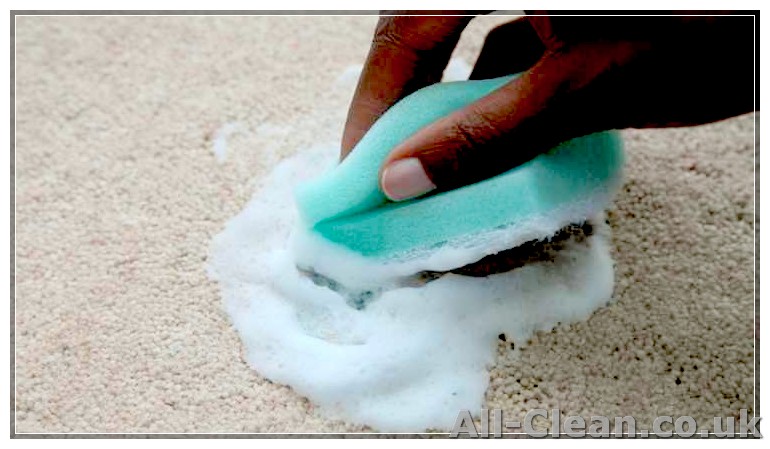
If the milk stain has dried and become stubborn, you can try using an ammonia solution to break it down. Mix 1 tablespoon of ammonia with 1 cup of warm water. Apply the solution to the stained area using a clean cloth or sponge. Blot the area gently until the stain starts to lift. Be sure to rinse the area thoroughly with clean water afterward to remove any residue.
Removing spoiled milk odor
If the milk has caused a lingering odor, there are a few methods you can try to eliminate the stink. One option is to mix equal parts water and white vinegar in a spray bottle. Spray the affected area and let it sit for a few minutes before blotting with a clean cloth or sponge. Another option is to sprinkle some baking soda over the area and let it sit for several hours before vacuuming it up.
Whichever cleaning method you choose, it’s important to start cleaning the milk stain as soon as possible. The longer the stain remains, the harder it can be to remove. With these step-by-step instructions and affordable cleaning techniques, you’ll be able to effectively remove milk stains and keep your carpet looking fresh and clean.
Step 3: Sprinkle the area with bicarbonate of soda
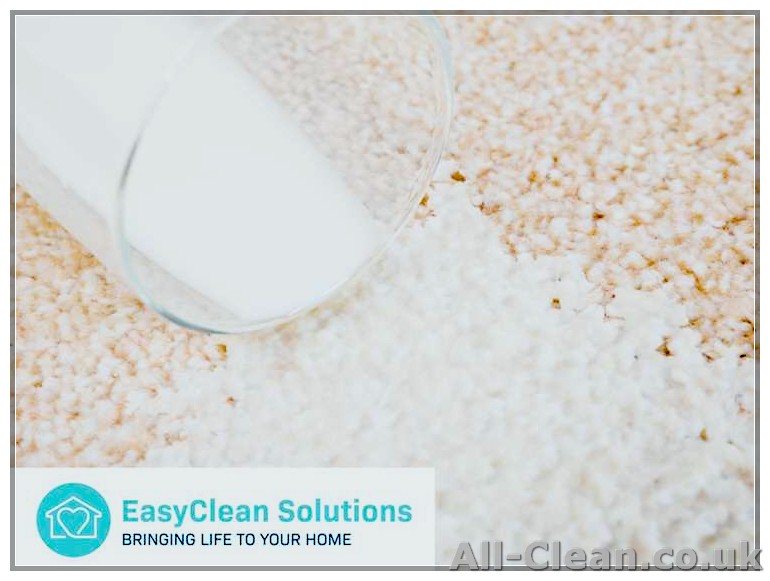
Once you have blotted up as much of the milk as possible and cleaned the area with soap and water, it’s time to tackle any remaining stains and odors. Bicarbonate of soda, also known as baking soda, is an excellent tool for cleaning and deodorizing carpets.
To use bicarbonate of soda for removing milk stains, simply follow these steps:
- Start by sprinkling a generous amount of bicarbonate of soda directly onto the affected area. Be sure to cover the entire spill and any surrounding areas that may have been affected.
- Using your hands or a clean, dry cloth, gently work the bicarbonate of soda into the carpet fibers. This will help to break up and absorb any remaining milk residue.
- Leave the bicarbonate of soda on the carpet for at least 15 minutes. This will give it time to fully absorb any leftover moisture and odors.
- After the 15 minutes have passed, use a vacuum cleaner to thoroughly clean up the bicarbonate of soda. Make sure to vacuum both the treated area and any surrounding areas that may have been affected by the spill.
By using bicarbonate of soda, you can help remove any remaining stains and odors caused by the spilt milk. Bicarbonate of soda is a natural and effective cleaning agent, making it a tried-and-tested method for removing a variety of stains from carpets.
However, if the milk stain persists or if the odor lingers, you may need to try alternative cleaning methods or seek professional help. It’s important to address milk stains and odors as soon as possible, as they can cause permanent damage to your carpets if left untreated.
Remember, prevention is always better than cure, so be sure to act quickly and follow these steps whenever a milk spill occurs on your carpet.
Step 4: Vacuum
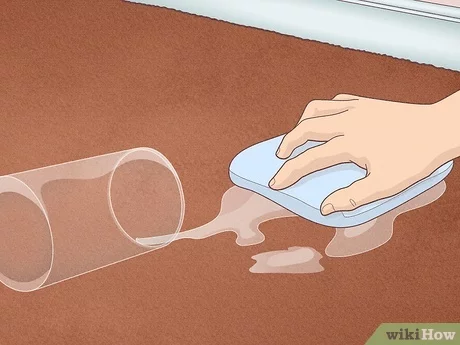
After you have thoroughly cleaned the milk stain and allowed it to dry, it’s time to vacuum the carpet to remove any remaining debris.
- Start with the areas where the milk spills were concentrated: Concentrate first on the areas where the milk was spilt to ensure that you pick up any excess solids or white residue.
- Use a vacuum with a good suction: Use a vacuum cleaner with a strong suction power to ensure that it picks up as much dried milk as possible.
- Deep clean your carpets: If the milk stain was deep and you can’t fully remove it with the previous steps, consider using a carpet cleaning machine or hiring a professional carpet cleaner to thoroughly clean the affected area.
- Remove any odour-absorbing substances: If you used any odour-absorbing substances like baking soda or cornstarch, make sure to vacuum them up as well to get rid of any lingering odours.
By vacuuming the carpet, you can remove any remaining milk residue and ensure that your carpet is clean and fresh-smelling once again.
Your 4-step guide for how to clean milk out of carpet areas
Dealing with milk stains on your carpet? Don’t worry, we’ve got you covered! Follow these 4 simple steps to remove milk stains and any lingering odors.
- Blot up the milk: As soon as you notice a spill, act quickly and gently blot up as much of the milk as possible using a clean cloth or paper towel. Avoid rubbing, as this can spread the stain further.
- Rinse with lukewarm water: Once you’ve removed the excess milk, rinse the affected area with lukewarm water. This will help dilute the milk and prevent it from leaving a nasty residue or smell. Use a clean cloth or sponge for rinsing.
- Spot clean with a mild cleaning solution: If the stain is still visible after rinsing, it’s time to use a mild cleaning solution. Mix a few drops of dishwashing liquid with lukewarm water. Dip a clean cloth or sponge into the solution and gently work it into the stained area.
- Blot and rinse again: After spot cleaning, blot the area with a clean cloth to absorb any remaining moisture. Then, rinse with lukewarm water once more to remove any leftover cleaning solution. Be sure to blot rather than scrub, as scrubbing can damage the carpet fibers.
By following these 4 steps, you can effectively clean milk stains out of your carpet and eliminate any unpleasant smells. Remember to act quickly, as dried milk stains are more difficult to remove. If the stain persists or you’re dealing with a larger spill, you may need to seek professional carpet cleaning assistance.
Dried Milk Stain
Milk spills happen, and when they do, they can leave behind white, dried stains on your carpet. But don’t worry, there are easy ways to remove these stubborn stains.
Method 1: Ammonia and Dish Soap
- When you get a dried milk spill, start by blotting up as much of the liquid as possible with a clean cloth or paper towel.
- In a spray bottle, mix a solution of one tablespoon of ammonia and one cup of warm water.
- Spray the affected areas with the ammonia solution and let it sit for about five minutes.
- Blot the area with a clean cloth or sponge until the stain is fully removed.
Method 2: Bicarbonate Soda and Dish Soap
- If the dried milk stain still smells, sprinkle a generous amount of bicarbonate soda on the affected area.
- In a bowl, mix one tablespoon of dish soap with two cups of cold water.
- Wring out a clean cloth or sponge in the soapy water and blot the stain.
- Continue blotting until the stain is fully removed, and then rinse the area with clean water.
Method 3: Cornstarch and Vacuum
- If the dried milk residue is still present, sprinkle some cornstarch on the stain and let it sit for a few hours.
- Use a vacuum cleaner with a powerful suction tool to vacuum up the cornstarch and residue.
- Repeat this process if necessary until the stain and smell are fully eliminated.
These methods should help you remove dried milk stains from your carpet. Whether it’s a fresh spill or a stubborn dried stain, these quick and easy steps will get your carpet looking clean and fresh again.
Spilt milk on the carpet? Here’s how to clean it up
If you have ever spilt milk on your carpet, you know how frustrating it can be. But don’t worry – there are tried-and-tested methods to remove milk stains from your carpet in a quick and easy way. Whether it’s a fresh spill or a semi-dried stain, these steps will help you get rid of the milk stain and its odor.
1. Blot the spill immediately
When you notice the milk spill, act fast. Use a clean cloth or paper towel to blot the area gently. Avoid rubbing the spill, as it can push the milk deeper into the carpet fibers and make the stain more difficult to remove.
2. Remove the milk solids
If there are any milk solids on the carpet, scrape them off gently using a spoon or a dull knife. Be careful not to damage the carpet fibers while doing this.
3. Create a cleaning solution
Mix 4 cups of warm water with a few drops of mild dish soap in a bowl. Stir well to create a soapy solution. Alternatively, you can use a commercial carpet cleaner or a mixture of equal parts white vinegar and water.
4. Clean the stained area
Using a clean cloth or sponge, apply a small amount of the cleaning solution to the milk stain. Work from the outside edges of the stain towards the center, gently scrubbing the area. Avoid using excessive water, as it can saturate the carpet and cause water damage.
5. Rinse the area
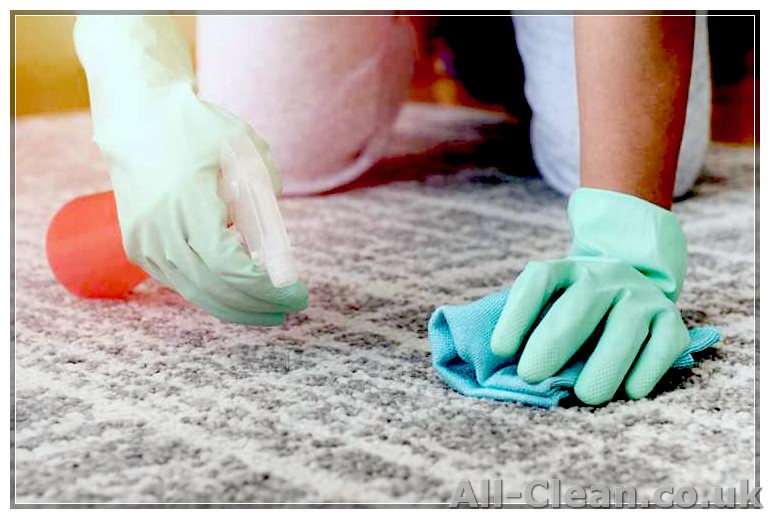
After working on the stain, moisten a clean cloth with plain water and blot the area to remove any soap residue. Repeat this step until the cloth comes out clean.
6. Use baking soda for deep stains
If the milk stain is stubborn or has dried, sprinkle a generous amount of baking soda on the affected area. Let it sit overnight to absorb the stain and any accompanying odors. Vacuum the baking soda the next day to remove it along with the stain.
7. Try ammonia solution for nasty smells
If the milk spill has left a nasty smell on your carpet, mix 1 cup of warm water with 1 tablespoon of ammonia. Dampen a cloth with the solution and blot the area. Be sure to work in a well-ventilated area and avoid inhaling the fumes. Afterward, rinse the carpet with plain water and blot it dry.
8. Repeat if necessary
If the stain or odor persists after following these steps, repeat the cleaning process or try alternative methods. Keep in mind that different carpet types may require different cleaning techniques.
By following this guide, you can effectively remove milk stains from your carpet, whether they are fresh or dried. Remember to test any cleaning solution on a small, inconspicuous area of the carpet before applying it to the stain directly. With a little bit of work, you can enjoy a clean and odor-free carpet once again.








